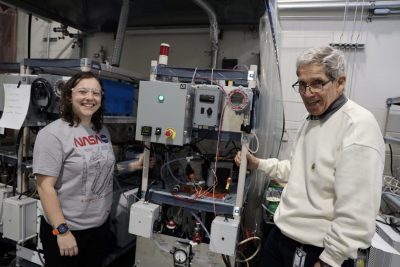 Warmest congratulations to Alanna Gado for being awarded the Graduate Research Fellowship sponsored by the NASA Connecticut Space Grant Consortium. Her work focuses on developing advanced catalyst-coated membranes for achieving high efficiency and high durability proton exchange membrane water electrolyzers under the advising of Professor Radenka Maric and in collaboration with Research Scientist Leonard Bonville and Associate Research Professor Stoyan Bliznakov. This research holds immense promise for the field of hydrogen production and clean energy technology, paving the way for sustainable solutions to our energy challenges. Read more on NASA Connecticut Space Grant Consortium.
Warmest congratulations to Alanna Gado for being awarded the Graduate Research Fellowship sponsored by the NASA Connecticut Space Grant Consortium. Her work focuses on developing advanced catalyst-coated membranes for achieving high efficiency and high durability proton exchange membrane water electrolyzers under the advising of Professor Radenka Maric and in collaboration with Research Scientist Leonard Bonville and Associate Research Professor Stoyan Bliznakov. This research holds immense promise for the field of hydrogen production and clean energy technology, paving the way for sustainable solutions to our energy challenges. Read more on NASA Connecticut Space Grant Consortium.
Students
After Semester-Long Development, Student-Created ‘BrewConn’ Beer Debuts with Glowing Reviews
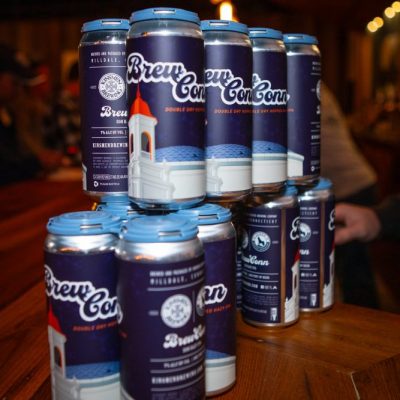
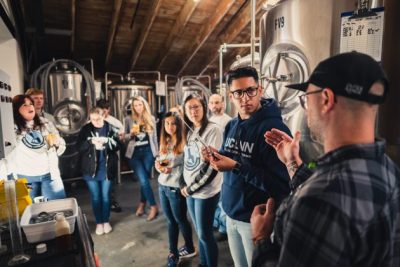
Our two senior design teams advised by Professor Jenn Pascal brewed with Kinsmen Brewing Co. for an exclusive launch event for UConn Brewing Innovation. It was a brew-tastic event last Tuesday with 300+ alumni, faculty, and students attending.
For the past three years, Professor Pascal has been offering a brewing course to allow senior chemical engineering students to apply their knowledge. They gained hands-on experience in brewing beer using homebrew scale equipment and kits. This year, the capstone course expanded, by offering trips to Smokedown Hops Farm in Sharon, Thrall Family Malt in Windsor, and two visits to the Kinsmen Brewing to learn about processing and canning. This has been a great experience both for those planning careers in craft brewing and for those seeking other endeavors, because of the real-world skills they’ve learned. As Professor Pascal has also highlighted: “Many chemical engineers work in the food and beverage industry. Chemical engineers are ‘process’ engineers and brewing beer involves optimizing processes and ways to improve them, all relevant skills in an assortment of industries.’’
Learn more about how Professor Pascal’s course and capstone project are transforming chemical and biomolecular engineering studies with hands-on brewing experience for our seniors on UConn Today.
Dorian Thompson Wins Graduate Student Competition in Sensors at the AIChE Annual Meeting
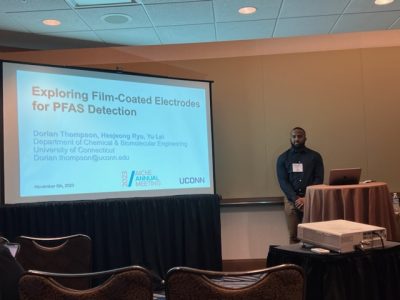 Warmest congratulations to Dorian Thompson for an outstanding achievement—securing the 3rd place in the Graduate Student Competition in Sensors at the AIChE Annual Meeting! Dorian works on PFAS detection under the advising of Professor Yu Lei.
Warmest congratulations to Dorian Thompson for an outstanding achievement—securing the 3rd place in the Graduate Student Competition in Sensors at the AIChE Annual Meeting! Dorian works on PFAS detection under the advising of Professor Yu Lei.
This win is a testament to the hard work and commitment of our graduate students, driving forward groundbreaking advancements in the field. Here’s to the continued success and impact of our student’s research at the forefront of chemical and biomolecular engineering!
1881 Series featuring UConn Brewing Innovation & Student Brewed Can Release
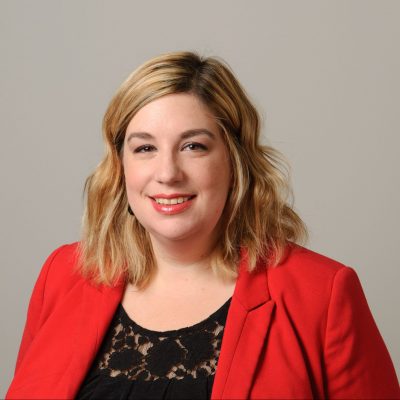

Our two senior design teams advised by Professor Jenn Pascal are brewing with Kinsmen Brewing Co. for an exclusive launch event for UConn Brewing Innovation. This initiative marks a unique collaboration between UConn students and some of Connecticut’s finest breweries! This is a moment to celebrate the spirit of innovation and community, where the art of brewing meets the science of chemical engineering.
📆 Mark your calendar: Tuesday, November 28, 2023
🕒 Time: 6:00 pm – 8:00 pm
📍 Location: Kinsmen Brewing Co., 409 Canal St.Milldale, CT 06467
Join us at the 1881 Series featuring UConn Brewing Innovation & Student Brewed Can Release (Registration link on UConn Foundation Website).
Austin Gelinas & Pranavi Rebala Triumph in Clean Energy & Sustainability Innovation Challenge
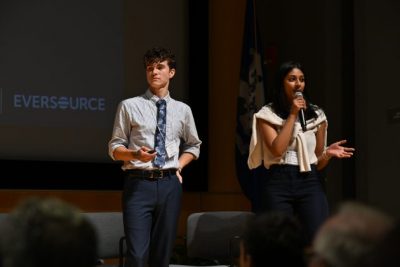
Warmest congratulations to Austin Gelinas and Pranavi Rebala, two brilliant undergraduate students from Chemical & Biomolecular Engineering and College of Liberal Arts, respectively, who emerged as champions in the Clean Energy & Sustainability Innovation Challenge! They not only took the lead among six outstanding teams but also presented an ingenious strategy to reduce New England’s heavy reliance on natural gas.
Austin and Pranavi’s visionary approach demonstrates the incredible potential for positive change. Their two-part strategy not only sets a precedent for sustainable energy but also highlights the pivotal role UConn can play in this endeavor.
Read more on their Winning Project “Enhancing Connecticut’s Green Economy: Comprehensive Short and Long-Term Approach to Renewable Energy Transition” and the event on UConn Today.
Inspiring Story of our Ph.D. Student Laron Burrows
 Laron Burrows, making remarkable strides in environmental innovation. His groundbreaking work focuses on cleaning up one of the world’s dirtiest chemical processes, ammonia production. Along with Prof. George Bollas, he has developed a new chemical looping reactor that is smaller, more efficient, and less expensive than traditional methods.
Laron Burrows, making remarkable strides in environmental innovation. His groundbreaking work focuses on cleaning up one of the world’s dirtiest chemical processes, ammonia production. Along with Prof. George Bollas, he has developed a new chemical looping reactor that is smaller, more efficient, and less expensive than traditional methods.
Laron is an entrepreneur at heart, and his startup company Andros will be competing in two major entrepreneurship challenges later this month. Best of luck to him!
Read the full article to learn more about Laron’s incredible journey and the impact they are making in UConn Today.
2022 Senior Design Demonstration Day
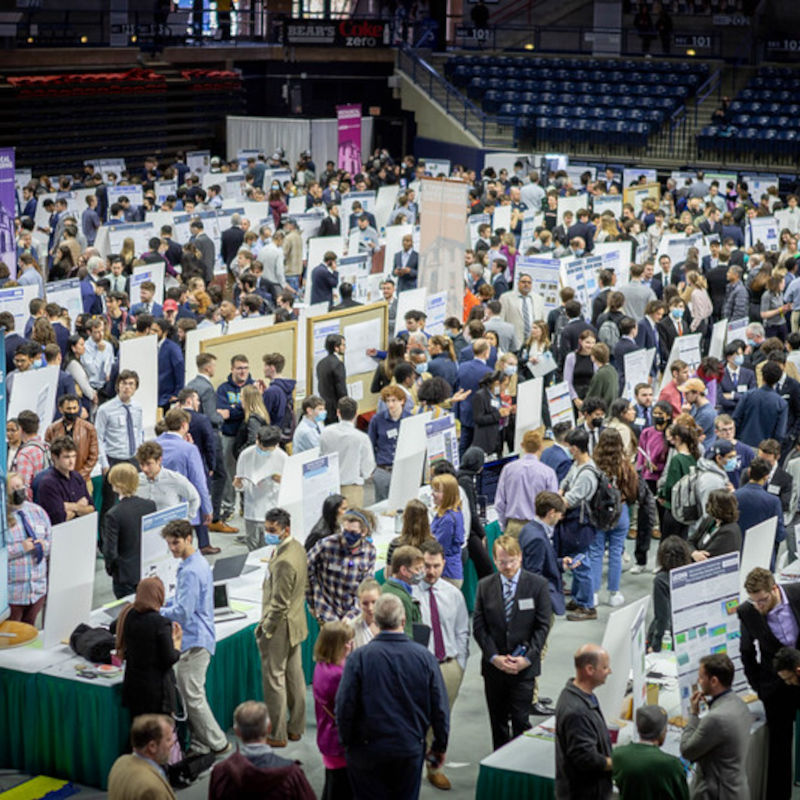
Our seniors have been working hard on their year-long senior design projects and will be presenting them this Friday, April 29th, in Gampel Pavilion! Come say his and learn about all the fun and cool projects that CBE majors take on! For location details and the schedule for the day, please click here.
Students Place First in Competition
Congratulations to undergraduate students Craig Allen, Talha Bhatti, Samuel Degnan-Morgenstern, and Nicholas Skovran for taking 1st place in the Jeopardy competition at the 2021 Eckhardt Northeast Student Regional Conference of the American Institute of Chemical Engineers.
Senior Design Day 2015
By Sydney Souder
 May 1, 2015 marked the School of Engineering’s much anticipated Senior Design Day. The Department of Chemical & Biomolecular Engineering showcased the projects of 13 teams at the event, a school-wide poster competition held on the floor of the Gampel Pavilion arena.
May 1, 2015 marked the School of Engineering’s much anticipated Senior Design Day. The Department of Chemical & Biomolecular Engineering showcased the projects of 13 teams at the event, a school-wide poster competition held on the floor of the Gampel Pavilion arena.
Each team of students spent the entirety of their senior year on a single open-ended capstone design project. The teams began their journeys with a written description of their project, and a faculty and an industry advisor to mentor them as they tackled the challenge.
Over the next eight months, students presented multiple oral presentations and submitted a range of written reports. The poster competition is the final step where the student’s designs are summarized on a 2’ by 3’ poster board display for the public.
On this ultimate design day, both the posters and students are judged. This year, CBE was pleased to host 14 industry experts to judge the posters. Half of these judges were UConn chemical engineering alumni. Each team of students had their poster and verbal pitch evaluated five times.
 This year’s assortment of projects varied from inventing a human habitat on Mars, to designing wastewater treatments for Unilever. Visitors were even treated to samples of sugar-reduced ice cream developed by a student team for UConn’s Dairy Bar. The following teams earned the highest scores:
This year’s assortment of projects varied from inventing a human habitat on Mars, to designing wastewater treatments for Unilever. Visitors were even treated to samples of sugar-reduced ice cream developed by a student team for UConn’s Dairy Bar. The following teams earned the highest scores:
First place was awarded to Team 10 whose project was titled “Novel Production and Purification of Manganese Dioxide.” The team consisted of Nicole Beauregard, Gianna Credaroli, Andrea DiVenere, Naomi Tennakoon and Abbey Wangstrom, and they were advised by Dr. Bill Mustain. Duracell sponsored their project to produce and characterize a more pure electrolytic manganese dioxide for use in alkaline batteries. By incorporating electrolyte additives, impurities in the material can be decreased. A battery with higher capacity can improve Duracell sales, lessen the environmental burden of battery waste products, and enhance the consumers’ trust in their power.
 Second place was awarded to Team 1 for their project “Oxygen Generation via CO2 and H2O Splitting for NASA Manned Space Missions.” Thomas Gay, Ari Fischer and Oscar Nordness made up Team 1, and they were advised by Dr. George Bollas. Team 1 used a chemical looping process to implement a metal oxide oxygen carrier for the Oxygen Generation System (OGS) in NASA’s International Space Station. Potential benefits of their system could reduce size and mass of the OGS as well as improve its electrical efficiency.
Second place was awarded to Team 1 for their project “Oxygen Generation via CO2 and H2O Splitting for NASA Manned Space Missions.” Thomas Gay, Ari Fischer and Oscar Nordness made up Team 1, and they were advised by Dr. George Bollas. Team 1 used a chemical looping process to implement a metal oxide oxygen carrier for the Oxygen Generation System (OGS) in NASA’s International Space Station. Potential benefits of their system could reduce size and mass of the OGS as well as improve its electrical efficiency.
Third Place was received by Team 4 for their project “Defluoridation of Ethiopian Groundwater for Human Consumption.” Dr. Doug Cooper advised the group of Jack Edmonds, Gabriella Frey and George Shaw. Due to the pressing health concerns from fluoride contaminated water, the goal of their project was to design a cost effective method of removing upwards of 90% of fluoride ions in groundwater used for human consumption. Current methods use imported technologies from China which are expensive and prone to shipping delays, especially in third world countries. Team 4 created a new method to defluoride water using magnesium oxide, a mineral already existing in Ethiopia.
“Design day is wonderful conclusion to the undergraduate journey,” says Dr. Cooper, professor and head of the department. “Our students show off their hard work, and visitors enjoy learning about the creative and sophisticated solutions they have developed.”
Bollas Receives Mentorship Excellence Award
By Sydney Souder
 Dr. George Bollas, Assistant Professor of the CBE Department, is the first recipient of the Office of Undergraduate Research’s (OUR) Faculty Mentorship Excellence Award. He received the award at the 18th Annual Frontiers in Undergraduate Research Poster Exhibition on Friday, April 10, 2015.
Dr. George Bollas, Assistant Professor of the CBE Department, is the first recipient of the Office of Undergraduate Research’s (OUR) Faculty Mentorship Excellence Award. He received the award at the 18th Annual Frontiers in Undergraduate Research Poster Exhibition on Friday, April 10, 2015.
With this award, OUR recognizes the critically significant role that mentors play in supporting their undergraduates’ research and creative activity. A committee of OUR Peer Research Ambassadors selected one faculty recipient and one graduate student for the Mentorship Excellence Award recognizing their dedication to their students.
Ari Fischer, one of his mentees who contributed to his nomination, presented the plaque to Dr. Bollas. Fischer commended Dr. Bollas’ extraordinary commitment to challenging and supporting his students. He attributes Dr. Bollas’ influence to helping his mentees achieve their research, personal, and professional goals. Dr. Bollas has helped his students formulate their own research projects, apply for fellowships and publish their own work.
Bollas’ current research group consists of seven Ph.D. students, one Masters student, and 10 undergraduates. Fischer asserts that Dr. Bollas’s dedication is not limited to just those in his lab, but to all of his students; he pushes them to get the most out of their education.
Although honored by his new plaque, Dr. Bollas explained what he considers his real prize. “At the end of the day we’re given the opportunity to spend time with these amazing, fresh minds hungry for knowledge and work, and that is what is most rewarding.”